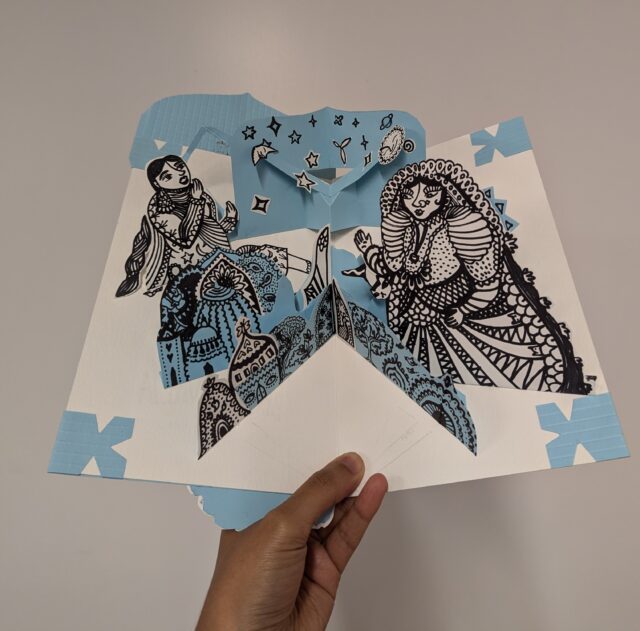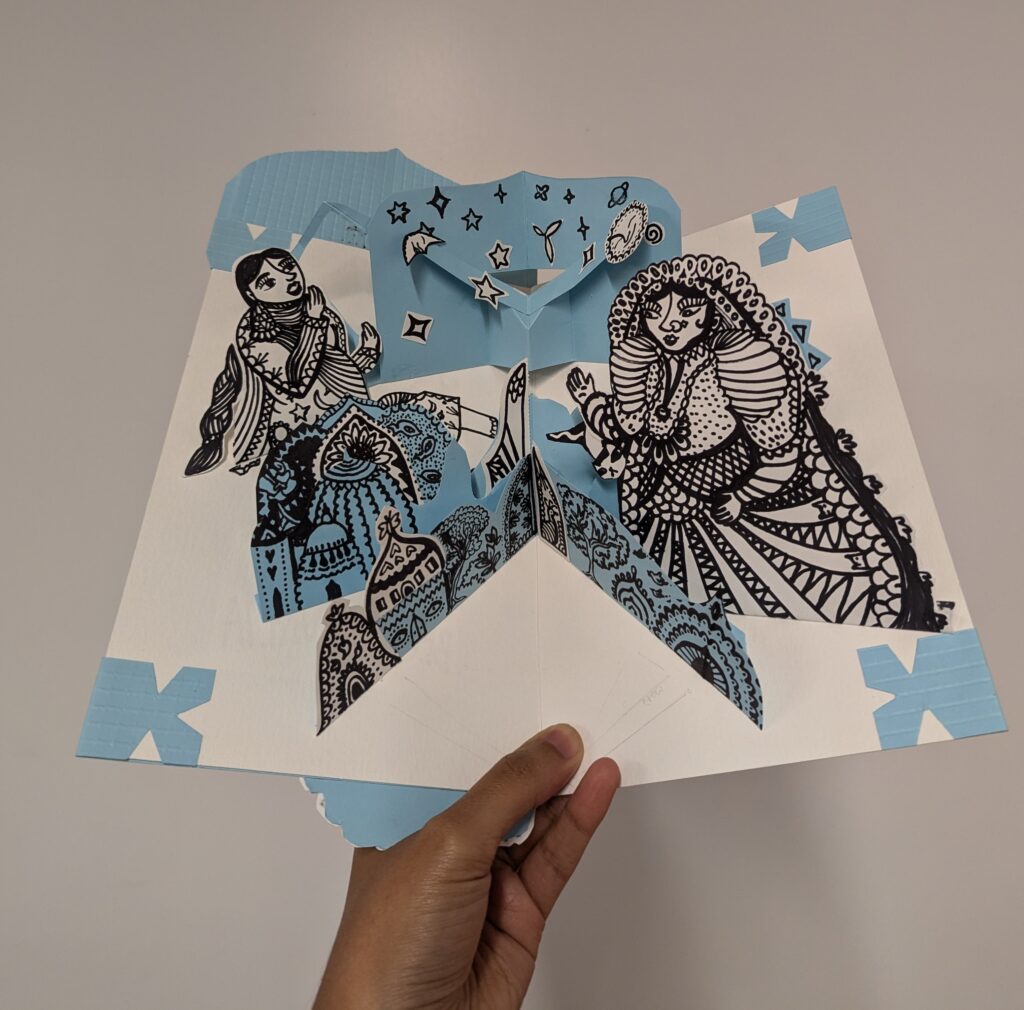These past few weeks have been quite challenging on the art front. In mid June, I had the serendipitous adventure into the world of—pop-up books! A throwback to childhood, if you may. It started off like any other New York “fun things to do this summer” suggestion does: A friend shared a casual summer event, I signed up, said friend did not show up. Lucky for me though, this had a pop-up book workshop included! I signed up with no expectation whatsoever (well, maybe I did expect more of my vocal and interested friends to turn up!), but little did I know that it would change the way I’ve been thinking about my thesis entirely.
My research question, “what would the world look like, if it was built on girls’ dreams for the future?”, has so much to unpack, not only in terms of content, but also, in form.
Here I had been, imaging a new world coming to life using sculptures and comics. I had been blind to exploring mediums I had little to no knowledge about, given the surreal, otherworldly nature of my project.
Safe to say, that pop-up book exhibit changed—not to be dramatic—my life.
I thought deeply about why pop-up books made me feel so different about the way I was approaching the art — in a way that no other exhibit had made me feel. To be more specific, why did I feel so drawn to using pop-ups (along with other art forms) in the immersive world I was concocting? Was it the playful nature of the medium? Its accessibility? The nostalgic feeling of childhood, of being a little girl again perhaps it was all of those. I couldn’t put my finger on it.
Unfortunately , the tricky, and often challenging part about being a “serious” artist, is putting your finger on it. I thought this post could perhaps explore that.
The more I thought about it, I realised it was far more important to disconnect from exactly that — thinking. I had to remove myself from the cage of being “serious” or an “artist”, and just be a child. Just play.
I had to make pop-up books and ask myself how I felt about my project.

at my workspace at the NYU Gallatin Artbuilt Studio
So there I was, reading Sultana’s Dream, and playing with scraps of paper, cutting odd shapes, and watching “How To Make Your First Pop-Up” videos on YouTube on day, and ordering protractors, rulers, and cutting boards the next. It was weeks and weeks of messing up, finding the right kind of glue, stressing out at first and then laughing about how a tiny fold can really make or break your final design. It was fun.
The process started revealing answers to my initial nudge of curiosity — why did I feel so drawn to use this for my project?
The act of opening a pop-up is perhaps where the reason lies. The moment when you aren’t sure what to expect, where you can sense movement but uncertain about where it will lead, the feeling of a tiny drop of adventure when a piece of paper becomes magic, where there is change. And isn’t that what imagination and dreaming is like? Like how between the folds of a pop-up, lies dormant magic. And how that magic can be activated by a small act of opening a page, aren’t all big dreams that lie dormant in ourselves get activated by tiny steps toward action?
Like pop-ups, dreams are worlds that both exist and do not. It is up to us whether we take the small yet vital step of letting our curiosity get the better of us.

